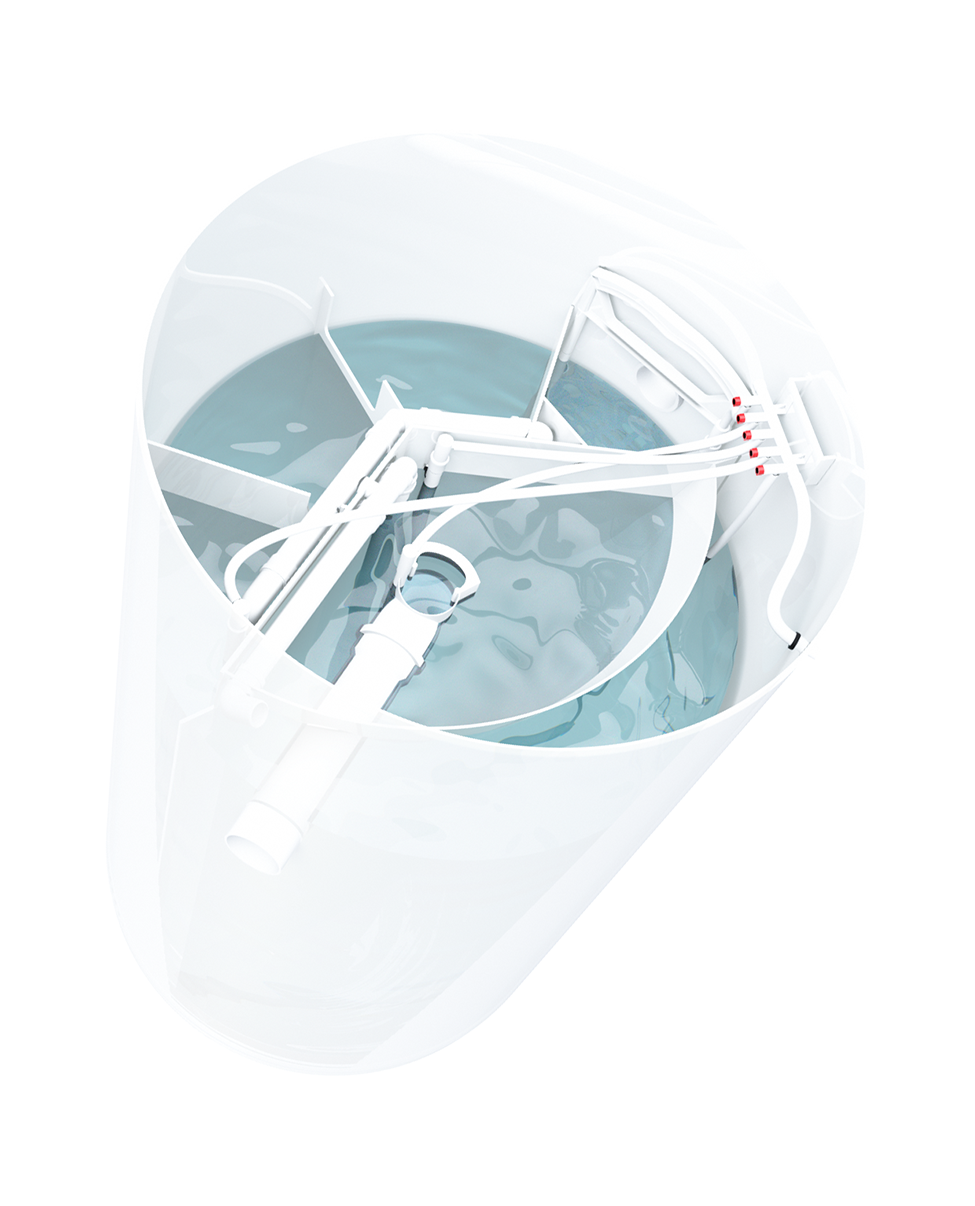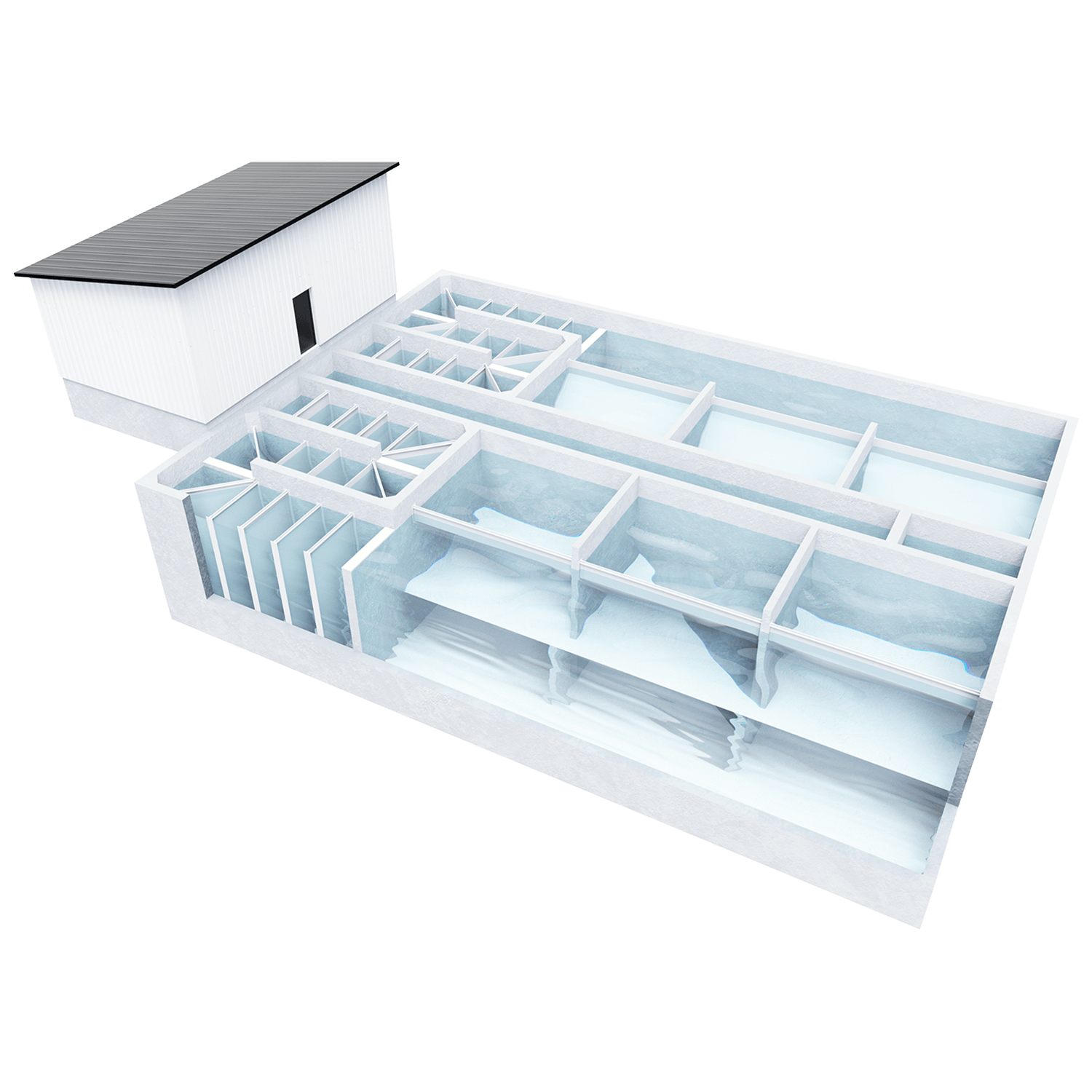What Are Wastewater Treatment Plants Used For?
Sewage treatment plants are used to remove pollutants from wastewater and clean it enough so it can be returned to the water cycle. Globally, wastewater treatment is a topic everyone is becoming increasingly aware of and it is being addressed at the highest levels of governance and decision-making. In order to find a sustainable approach to wastewater management, a wide range of strategies can be implemented. They all add to the improvement of wastewater management systems, thus contributing to sustainability, environmental protection, and global water quality improvement.
Many of Europe’s private households, farmers, businesses, and public buildings have access to a centralised water supply. However, rural populations of remote towns, or those living in isolated farmsteads for example, often do not have this option and have to opt for local sewerage, also known as pit latrines. It is also common practice to install a sewage treatment plant for the homestead. However, it is worth knowing that sewage pits (latrines) are banned for new constructions (newly built homes) and that old sewage pits have to be replaced by sewage treatment plants.
Residents who do not have access to a central sewerage system in the EU are forced to use different alternatives for obtaining water and managing wastewater. The choice of wastewater treatment options depends on a number of factors, and each resident or company has the right to choose which option is the most beneficial and convenient after assessing their options.
Maintenance Of Wastewater Treatment Plants
Just like any other device or system, wastewater management plants need to be maintained. The maintenance should be carried out periodically. It is recommended that wastewater treatment plants are maintained by the same company that installed them or its delegated representative. This ensures the longevity and proper operation of the plant.
The maintenance process for wastewater treatment plants consists of different stages, taken depending on the frequency of maintenance. When the maintenance is carried out by the installer, periodic technical inspections are carried out, assessing the overall condition of the plant, the amount of accumulated sludge, and the condition of the filters. To ensure the smooth operation of the plant, excess sludge must be removed. It is technically possible to maintain wastewater treatment plants by yourself, but this should be done responsibly and in accordance with the manufacturers’ instructions and rules.
How Do I Choose The Right Wastewater Treatment Plant?
In order to choose the most suitable wastewater treatment plant, an accurate and individual assessment analysis has to be carried out.
Before selecting a wastewater treatment method, it is important to know how polluted the wastewater is and the amount of biogenic substances, i.e. phosphorus and nitrogen compounds, present in it. In organic wastewater, nitrogen is converted to ammonia or ammoniacal nitrogen due to a series of chemical reactions. While in domestic wastewater these compounds are formed from the decomposition of proteins and urine. Ammoniacal nitrogen oxidises to nitrites, then – to nitrates. If nitrogen compounds, in the form of nitrates, are found in wastewater, it means that the organic pollutants are mineralised. There are limits on discharges to the environment. They must not exceed 10-25 mg/l of nitrogen (depending on the volume of wastewater discharged and the receiving facility for the treated effluent). On average, one person generates approx. 12 g of nitrogen per day. Phosphorus is another dangerous biogenic pollutant that is found in the form of organic phosphorus or polyphosphates. Discharges to the environment must not exceed 0.5-5 mg/l of phosphorus (depending on the volume of wastewater discharged and the receiving facility for the treated effluent). The average person generates 2.7g of phosphorus per day.
When choosing a sewage system, it is important to consider: the characteristics of the house and the plot, indicators such as the land area, the lawn area, the area of hard surface, and the characteristics of the prevailing soil. These parameters can influence the complexity of the installation process for the plant. The amount of water consumption, which depends on the number of inhabitants, must also be taken into account. In addition to the total wastewater generated, a calculation of wastewater flows should be carried out. These should consist of average and maximum daily wastewater flows, as well as maximum, minimum, average hourly and per-second wastewater flows, surface runoff (rainwater/surface runoff should not be discharged into the domestic wastewater network, except for a theoretical estimate of water entering through manhole covers in the case of long sewerage routes).
One more important indicator to consider before choosing a wastewater treatment plant is the price/quality ratio. This is an important purchase that must be properly considered and evaluated. Therefore, one should not rush to choose the cheapest option on the market. It is important to consider the best option for your needs, look at the feedback from people who use individual wastewater treatment plants, listen to experts, and then choose the best option for you.
Biological Wastewater Treatment Plants
Biological treatment involves: treating wastewater with activated sludge, separating the sludge from the treated wastewater, and returning it to an aeration tank where the wastewater is mixed with the sludge and air is supplied. All of this takes place in a single wastewater tank. Plants with these capabilities and features are held in high regard due to their dependability and durability. The activated sludge is separated from the treated wastewater in a special way, protecting the wastewater treatment plant from malfunctions, sludge carry-over, unpleasant odours, or other issues. Not all plants are protected against sludge carry-over, so check with manufacturers or vendors to see how this problem is addressed. For example, the AUGUST treatment system has a funnel-shaped separation zone. As the sludge itself is heavier, it is deposited at the bottom of the unit, from where it is then returned to the treatment process or removed if there is an excess.
Biological treatment plants should be used continuously. It is therefore important to assess the frequency of use before making a choice. Also, the use of biological wastewater treatment plants should prevent you from choosing aggressive household chemicals or other substances that could harm the biological processes taking place in the plant (household chemicals such as detergents, etc. can enter our plants. Petroleum products, thinners/solvents or other toxic substances are also very hazardous).
What Problems Do Wastewater Treatment Plants Solve?
Purchasing and installing wastewater treatment plants can help people manage their wastewater safely and without endangering the environment. This greatly contributes to all-around environmental protection. Perhaps the biggest problem that the right wastewater treatment plant addresses is sustainability. Having a proper and certified wastewater treatment plant will ensure that you are contributing to a better future and a cleaner tomorrow!
What Permits Are Required To Install A Wastewater Treatment Plant?
The installation of a wastewater treatment plant requires appropriate permits, which will depend on the capacity and model of the plant you are planning to purchase. Building permits are required for any significant changes to your plot (building permits are required for the construction of non-special buildings and some uncomplicated buildings).
So, if you are installing a sewage treatment plant, it should comply with the requirements of the Wastewater Management Regulation. When installing wastewater treatment plants, if they discharge 5 m3/day or more wastewater, they must bear a quality assurance mark (CE marking is also required for small wastewater treatment plants). Thus, a user wishing to install a sewage treatment plant must submit the necessary application and obtain the normative technical construction documents from the supplier or contractor, complying with the technical specifications, in accordance with the procedure laid down.



